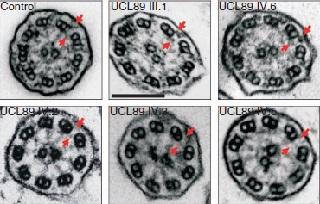Digital wellbeing should be a public health priority for the Arab region
21 October 2025
Published online 6 March 2012

Many cells types of the human body have busy hair-like cilia protruding from their surface: they sweep dirt from the lungs; stir cerebrospinal fluid through the central nervous system; and they guide eggs down the Fallopian tubes and sperms toward eggs, they even send signals during embryo development.
In one in every 15,000 to 30,000 children, the motile cilia cannot move and are thereby unable to perform their many vital functions, a condition termed primary ciliary dyskinesia (PCD). An international team of researchers, led by Hannah Mitchison from the University College London and David Mitchell from the State University of New York Upstate Medical University, have identified a new gene, DNAAF3, which joins the ranks of 13 others critical to proper cilia function, publishing their findings in Nature Genetics.
DNAAF3 encodes a motor protein that helps assemble dynein arms, which convert chemical energy into movement in the cilia, analogous to how the muscles move the human arm, and power the beating action of cilia. The gene is highly conserved throughout evolution, allowing the researchers to study the DNAAF3 protein's function in the algae Chlamydomonas reinhardtii.
They found that DNAAF3 operates within a cells' cytoplasm to assemble and stabilize dynein as well as to detach the final protein from chaperone complexes. They also looked at the gene's role in zebrafish development, a convenient model species, which was impaired similar to people with PCD.
Analyzing genes from consanguineous families of Arab descent, as well as other families that had individuals with PCD, the team — which includes Maha Al Dabbagh of the King Fahd Armed Forces Hospital in Jeddah, Saudi Arabia — identified three nonfunctional DNAAF3 mutants, not previously recorded in major gene databases.
"Because the defect is in an assembly step, and is not a mutation in any of the proteins that make up cilia, future research may lead to drugs or gene therapies that can help these ciliary proteins assemble without the aid of DNAAF3," says Mitchell.
Proper cilia development is vital for many organisms, but it is a complex system where a small glitch can have severe consequences. It's likely that other proteins are involved in assembling – or misassembling – dynein, the researchers suggest.
doi:10.1038/nmiddleeast.2012.28
Stay connected: